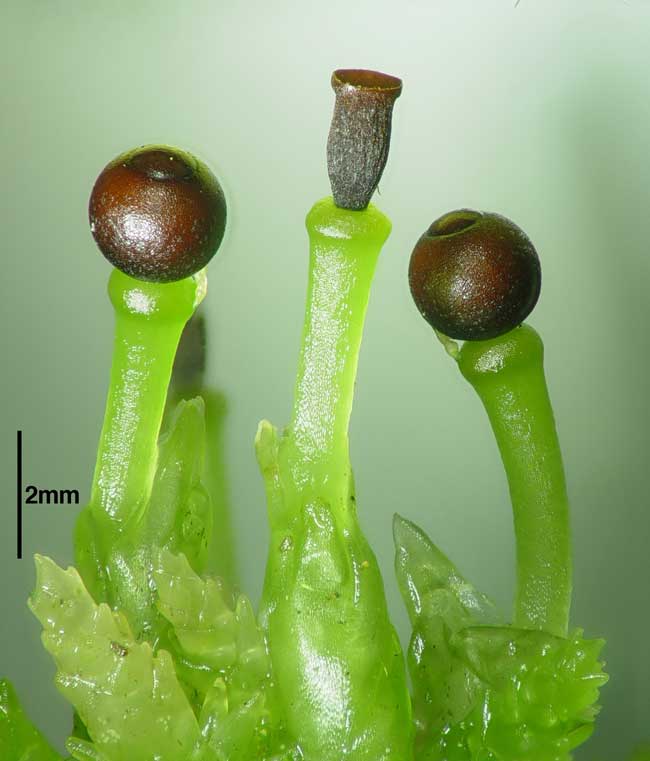
Exploding Moss Reproduces with a Bang

A primitive, bog-dwelling moss isn't as simple as it appears: The moss possesses a tiny air gun so powerful it shoots out minuscule mushroom clouds, a first in the plant world.
Using high-speed video, researchers discovered that primitive Sphagnum moss, better known as peat moss, employs complex aerodynamics to launch its reproductive spores into the air.
To spew forth a neat little package of saffron-colored spores, the moss uses something called a vortex ring, which the scientists were able to examine up-close, to better understand how the moss is able to spread its seeds and successfully reproduce itself.
The results of their study are detailed in the July 23 issue of the journal Science.
Donut-shaped rings
To understand the nature of a vortex ring, picture a smoke ring. The smoke stays in that recognizable donut shape and moves through the air as a single unit. It's an extremely efficient way for a material to move through space.
"It's not just a puff of air, it's a very special puff of air," said Dwight Whitaker, a physicist at Pomona College in California who conducted the study of exploding Sphagnum with co-author Joan Edwards, a botanist and a professor at Williams College in Massachusetts.
Sign up for the Live Science daily newsletter now
Get the world’s most fascinating discoveries delivered straight to your inbox.
Although seen frequently in the animal kingdom, Whitaker said this is the first example in the plant world of a vortex ring. And it could be the secret to Sphagnum's relative success. The plant covers about one percent of the Earth's surface, an area more than twice the size of Texas.
A mini air gun
The plant's reproductive capsules start out about the size and shape of a very small peppercorn, packed with spores and air. As the sun dries the waterlogged capsules, they begin to shrink into a tube shape, compressing the air trapped inside — a bit like the pump-action on a super-soaker water gun. Finally the air pressure becomes so great that — pop! — the spores explode out of the tube in a mushroom cloud-shaped vortex ring. The spores then ride the wind to new habitats.
The winds the spores ride don't reach all the way to the earth; they start about 4 inches (10 centimeters) in the air. Without forming a vortex ring, which keeps the spores clumped together, Whitaker said the moss's spores would disperse willy-nilly, and fall uselessly to the ground, missing their free ride.
"Imagine scooping up a handful of dust, getting in your car, driving 60 mph, and throwing the dust out the window," Whitaker said. Without the aid of a vortex ring "it's going to instantly slow down."
The average Sphagnum vortex ring shoots more than 4.3 in (11 cm) in the air, but Edwards said they'd witnessed some spore clouds reach 6.7 in (17 cm) — more than 80 times the height of the minuscule launching capsule.
Cheetah of the plant world
In addition to its impressive jump shot, Sphagnum is speedy.
Johan L. van Leeuwen, a professor of experimental zoology at the Netherlands' Wageningen University, said the spores shoot out at almost 89 mph (144 kph). "That's phenomenal acceleration," van Leeuwen said. "I didn't expect it would be that high."
Edwards said this rudimentary moss has been vastly underestimated. "A Venus flytrap is a couch potato compared to our plant," she said."Sphagnum's body is very simple, and yet it's doing this very complicated thing."
"It's really special," Edwards said. "Other mosses do exciting things, but not this exciting."
- Top 10 Poisonous Plants
- Gallery: A Corpse Flower Blooms
- Forensic Tools May Help Save 'Living Fossil' Plants
This article was provided by OurAmazingPlanet, a sister site to LiveScience.










